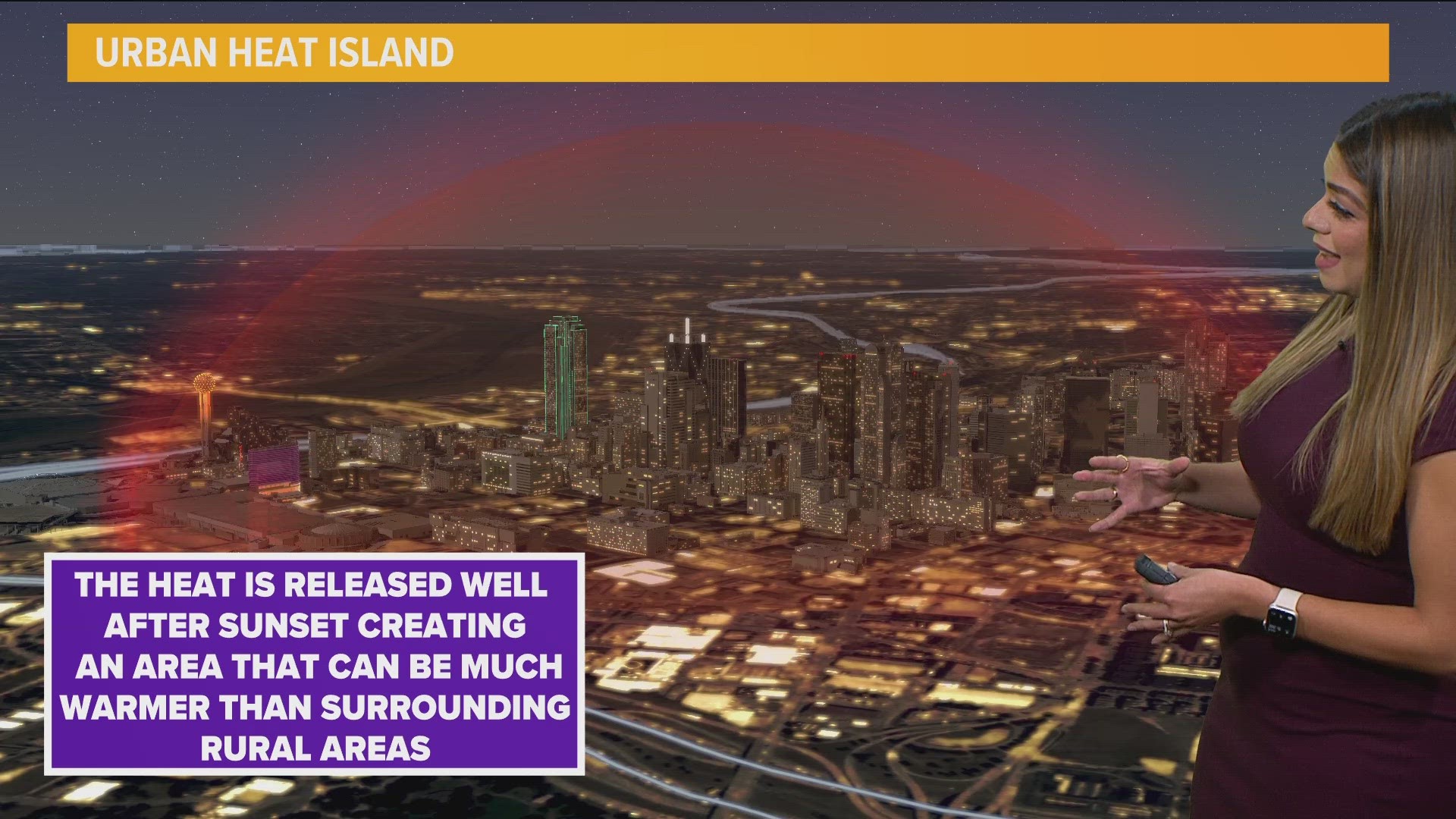DALLAS — Yes, it is summer. Yes, it is hot. August is the hottest part of the year with DFW's normal afternoon high temp of 97 and normal morning low temp of 77. This is the highest "normal" temperature at any given point in the year.
We pay a lot of attention to afternoon highs, but morning lows are something to also consider.
Warm Mornings
For two mornings in a row, DFW Airport only cooled down to 86 degrees. This broke daily record warm low temperatures. It also tied for the warmest low on record. This has only happened seven times in recorded history as of Wednesday.
We know and expect afternoon temperatures to be brutal this time of the year. But as of lately, morning temperatures have trended warmer. This means higher cooling costs at night and higher stress on our bodies trying to recover from the afternoon heat.
In fact, 2023 now ranks fourth for the number of days with lows higher than 80. The top five on that list have all happened within the past 25 years.
Population Growth
Since 1990, the population for DFW has soared from just over 4 million to over 7.6 million according to the latest census in 2022.
The rise in population has led to an increase in demand for infrastructure to support the growth of the area. This led to the addition of 890 square miles, roughly the size of Dallas County, of impervious surfaces. Impervious surfaces are artificial surfaces like asphalt, concrete, brick, stone, or rooftops and buildings. Basically surfaces that are water resistant.
Urban heat island effect...but at night
Impervious surfaces don't absorb water but are effective at absorbing heat during the day. Heat is released at a higher rate by these surfaces than by natural surfaces like soil and grass. This leads to higher air temperatures in the city vs in a rural area.
As a rule of thumb, temperatures run about five degrees warmer in the city than locations just outside of the city.
A study run by the US Environmental Protection Agency found that on a clear, calm night the temperature difference in a city vs its rural counterpart can be as high as 22 degrees.
This is because impervious surfaces absorb and store a lot of heat that will eventually be released well into the overnight hours. The heat that is released gets trapped near the surface because of the taller buildings.
Solutions
Urban heat islands were created due to a number of factors, so it'll take a few different factors to balance it out.
More green spaces throughout the city and the addition of different types of vegetation would be a helpful start. This would help regulate the heat being absorbed and released by different surfaces. The addition of vegetation would help reduce air temperature by adding moisture to the surrounding air.

